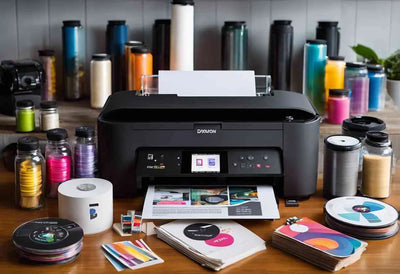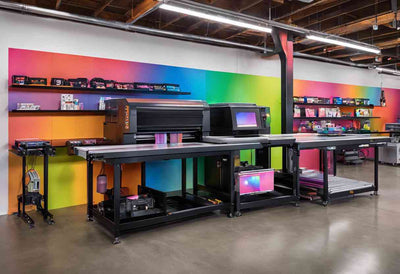Introduction to DTF Transfers
Direct to Film (DTF) transfers represent a revolutionary technology in the printing industry. DTF transfers provide superior versatility and vibrant output. This section offers a comprehensive overview, starting with the DTF meaning in printing: Direct To Film allows for intricate, high-quality prints on textiles.
Here are some key aspects to understand:
- DTF Ready to Press: Using premium DTF supplies for quality printing results ensures seamless application.
- Optimal Heat Press Settings Guide: Achieving the best outcome requires specific heat, pressure, and time settings.
- Advantages over DTG: DTF vs DTG printing key differences explained, with DTF offering broader material compatibility.
- Placement Guide: Refer to the DTF transfer placement guide included in our FAQs.
This section sets the foundation for understanding how to print DTF transfers easily with DIY techniques.
How DTF Transfers Work
Direct-to-Film (DTF) transfers involve printing a design onto a specialized film, which is then transferred onto fabric using a heat press. The process starts with creating a digital design that is printed onto the film using DTF supplies. High-quality inks ensure vivid colors and intricate details are captured on the film.
Steps Involved
- Design Creation: The design is created digitally using graphic design software.
- Printing: The design is printed onto the DTF film using a specialized DTF printer.
- Powder Application: A hot-melt adhesive powder is applied onto the printed film.
- Curing: The film is heated to cure the powder, forming a bond with the ink.
- Pressing: The cured film is placed onto the fabric and pressed with optimal DTF heat press settings.
Important Considerations
- Placement: Refer to the DTF transfer placement guide for accurate design positioning.
- Temperature and Pressure: Follow the optimal DTF heat press settings guide for best results.
- Comparisons: For those wondering, dtf vs dtg printing key differences explained in other sections.
Utilizing premium DTF supplies ensures quality, durability, and vibrant outcomes. For more information, check out the faqs section or visit the about us page.
Advantages of DTF Transfers
DTF transfers offer numerous advantages that make them highly desirable for a range of printing needs.
- Versatility: Suitable for various fabrics including cotton, polyester, and blends without compromising on quality.
- Durability: Exceptional wash and wear resistance, ensuring long-lasting prints.
- Vivid Colors: Produces bright and vibrant colors, enhancing the visual appeal of the design.
- Ease of Use: DTF ready to press options simplify the application process, making it accessible for beginners.
- Cost-Effective: Reduces production costs by eliminating the need for pretreatment and expensive equipment.
- Detailed Prints: Capable of reproducing intricate details and fine lines with precision.
Comparison with Other Transfer Methods
When examining DTF transfers compared to other methods like Direct-to-Garment (DTG) and screen printing, several distinctions arise.
-
Print Quality: DTF transfers often offer superior quality to DTG, particularly on dark fabrics. The “DTF vs DTG printing key differences explained” section emphasizes DTF's versatility.
-
Application: Unlike screen printing, which involves a more labor-intensive process, DTF is more straightforward as outlined in the “print DTF transfers easily your DIY guide.”
-
Durability: DTF transfers are known for their durability after multiple washes, a crucial factor highlighted in the “FAQs.”
-
Cost: DTF can be more cost-effective given the “premium DTF supplies for quality printing results,” ensuring affordability without sacrificing quality.
Professionals seeking more insights can refer to “DTF meaning in printing your clear guide” and utilize the "DTF transfer placement guide" and "optimal DTF heat press settings guide" for best results.
Essential Equipment for DTF Transfers
Understanding the essentials helps ensure success in DTF transfer projects. Here's a detailed overview of the necessary equipment:
1. Printer
A compatible printer with specific DTF capabilities is vital. Unlike DTG, DTF printers handle specialized, durable inks and films.
2. DTF Transfer Film
Premium-grade DTF transfer film is essential for capturing fine details and ensuring robust transfers.
3. Inks
Quality DTF inks differ from standard inks. Look for pigmented inks designed for DTF to ensure vibrant and long-lasting prints.
4. Powder Adhesive
A fine powder adhesive ensures that the ink bonds well with the transfer film, providing durability and adhesion.
5. Heat Press
An optimal DTF heat press, critical for proper application, lets users fine-tune specific settings based on the garment and transfer type.
6. Software
Effective design software helps in creating intricate designs and preparing them for printing.
This section addresses basic DTF supplies while guiding enthusiasts on print DTF transfers easily. Peruse the rest of our ultimate guide for deeper insights, including a comprehensive DTF transfer placement guide and frequently asked questions.
Step-by-Step Process of Applying DTF Transfers
To seamlessly apply DTF transfers, the following steps should be strictly followed:
-
Prepare Your Workstation: Ensure all
DTF suppliesare ready, including the transfer print, aDTF ready to pressgarment, and a heat press machine. -
Pre-Press the Garment:
- Lay the garment flat.
- Pre-press for 5 seconds to remove moisture and wrinkles.
-
Align the Transfer:
- Use the
DTF transfer placement guidefor precision. - Place the DTF transfer design side down.
- Use the
-
Set the Heat Press:
- Refer to the
[optimal dtf heat press settings guide](https://dtfdallas.com/blogs/news/optimal-dtf-heat-press-settings-guide). - Commonly set at 320°F and medium pressure.
- Refer to the
-
Press the Transfer:
- Press for 10-15 seconds.
- Release the heat press and let the transfer cool.
-
Peel Off the Film:
- Once cooled, peel off the transfer film smoothly.
- Inspect for quality.
By following this precise guide, individuals can print DTF transfers easily and achieve the desired quality with premium dtf supplies.
Maintenance and Care for DTF Transfers
To maintain the quality of DTF transfers, users must follow specific guidelines. Here are some essential steps:
-
Washing Instructions:
- Wash garments inside out to protect designs.
- Use cold water settings.
- Avoid bleach and harsh detergents.
-
Drying Tips:
- Tumble dry on low heat or air-dry.
- Avoid over-drying to prevent degradation.
-
Ironing Precautions:
- Do not iron directly on the transfer.
- Use a pressing cloth if ironing is needed.
-
Storage Solutions:
- Store in a cool, dry place.
- Keep away from direct sunlight.
-
Handling DTF Supplies:
- Follow guidelines on the DTF Ready to Press packages.
- Consult the Optimal DTF Heat Press Settings Guide.
For more detailed instructions, visit our About Us page and FAQs on DTF Supplies.
Common Challenges and Solutions
When dealing with DTF transfers, professionals often encounter obstacles. Adequate knowledge, demonstated in resources like “DTF meaning in printing your clear guide,” can be a game-changer.
Adhesion Problems
Achieving perfect adhesion is a common issue. Here are potential solutions:
- High-Quality DTF Supplies: Use premium DTF supplies for quality printing results.
- Pre-Treatment: Ensure substrates are clean and lint-free.
- Heat Press Settings: Follow the optimal DTF heat press settings guide.
Color Vibrancy
Maintaining vibrant colors can be tricky.
- Correct Ink: Use DTF ready to press inks for superior outcomes.
- Printing Techniques: Understand the DTF vs DTG printing key differences explained.
Placement Errors
Incorrect transfer alignment happens frequently.
- Use Guides: Refer to the DTF transfer placement guide for accuracy.
- Practice: Print DTF transfers easily by following your DIY guide.
Equipment Maintenance
Improperly maintained tools lead to poor results.
- Regular Cleaning: Clean your printer and heat press routinely.
- Quality Components: Invest in durable, high-quality parts.
For additional support, refer to our FAQs section, or learn more about us for comprehensive assistance.





